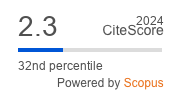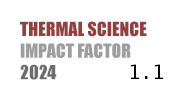ABSTRACT
This paper systematically compiles a series of high-quality research papers, delving into the intersection of artificial intelligence and thermal science, while thoroughly analyzing related research on micro/nanofluids and fractal thermal science. In the context of artificial intelligence applications in thermal science, it elaborates on how deep learning revolutionizes intelligent thermal management systems, optimizes heat exchanger performance, and constructs more accurate predictive models for thermal processes. In the domain of micro/nanofluids, it encompasses pivotal subjects such as the enhancement mechanisms of thermal conductivity in nanofluids, the design and implementation of microfluidic devices in precise temperature regulation, and the impact of nanoparticle dispersion and aggregation on the thermal properties of fluids. In the domain of fractal thermal science, the text delves into a range of subjects, including the fractal geometry of heat transfer in porous media, fractal analysis of thermal diffusion in complex materials, and the modeling and performance evaluation of fractal heat exchangers. This review serves as a valuable resource, offering researchers, engineers, and students in thermal science and related fields a comprehensive understanding of the subject matter. It is anticipated that this review will stimulate further research and innovation in this area, playing a pivotal role in guiding and inspiring advancements in thermal science.
KEYWORDS
PAPER SUBMITTED: 2025-01-01
PAPER REVISED: 2025-03-07
PAPER ACCEPTED: 2025-03-07
PUBLISHED ONLINE: 2025-04-05
THERMAL SCIENCE YEAR
2025, VOLUME
29, ISSUE
Issue 3, PAGES [1671 - 1677]
- Zhang, Y., et al., Artificial Intelligence-Aided Thermal Model Considering Cross-Coupling Effects, IEEE Transactions on Power Electronics, 35 (2020), 10, pp. 9998-10002
- Mzili, T., et al., Hybrid Genetic and Penguin Search Optimization Algorithm (GA-PSEOA) for Efficient Flow Shop Scheduling Solutions, Facta Universitatis-Series: Mechanical Engineering, 22 (2024), 1, pp. 77-100
- Nosonovsky, M., Triboinformatics: Machine Learning Methods for Frictional Instabilities, Facta Universitatis-Series: Mechanical Engineering, 22 (2024), 3, pp. 423-433
- Qi, H. S., et al., Application of Artificial Intelligence Control in the Control System of Cooling and Heating Energy Stations, Thermal Science, 28 (2024), 2B, pp. 1321-1328
- Wahjd, N. S., et al., Numerical and Statistical Analyses of a Natural Convection Radiative Hybrid Nanofluid Flow on a Vertical Permeable Plate, Thermal Science, 28 (2024), 5B, pp. 4209-4221
- Manikandan, S., Nanthakumar, A. J. D., Development of a Predictive Model for Thermal Conductivity in Graphene Nanoplatelets Infused Damper Oil Using ANN/RSM, Thermal Science, 28 (2024), 5B, pp. 4235-4247
- Liu, Y. P., et al., Clover-Inspired Fractal Architectures: Innovations in Flexible Folding Skins for Sustainable Buildings, Fractals, On-line first, doi.org/10.1142/S0218348X25500410, 2025
- Li, X. X., et al., Elucidating the Fractal Nature of the Porosity of Nanofiber Members in the Electrospinning Process, Fractals, 32 (2024), 6, 2450109
- Liu, Y. P., et al., Leveraging Lotus Seeds' Distribution Patterns for Fractal Super-Rope Optimization, Fractals, On-line first, doi.org/10.1142/S0218348X24501433, 2024
- He, C. H., Liu, C., Fractal Dimensions of a Porous Concrete and Its Effect on the Concrete's Strength, Facta Universitatis Series: Mechanical Engineering, 21 (2023), 1, pp. 137-150
- He, C. H., et al., A Novel Bond Stress-Slip Model for 3-D Printed Concretes, Discrete and Continuous dynamical Systems-Series S, 15 (2022), 7, pp. 1669-1683
- He, J.-H., Transforming Frontiers: The Next Decade of Differential Equations and Control Processes, Advances in Differential Equations and Control Processes, 32 (2025), 1, 2589
- Darzi, A. A. R., et al., Utilizing Neural Networks and Genetic Algorithms in AI-Assisted CFD for Optimizing PCM-Based Thermal Energy Storage Units with Extended Surfaces, Thermal Science and Engineering Progress, 54 (2024), 102795
- Lei, Y., Construct a Deep Meta-Learning Model for Accurate Outdoor Thermal Comfort Prediction and Its Application, Int. J. Environ. Sci. Technol., On-line first, doi.org/10.1007/s13762-024-06099-1, 2024
- Rautela, K. S., Goyal, M. K. Transforming Air Pollution Management in India with AI and Machine Learning Technologies, Sci. Rep., 14 (2024), 20412
- Feng, Y., et al., Application of Physics-Informed Neural Networks (Pinns) Solution to Coupled Thermal and Hydraulic Processes in Silty Sands, Geo-Engineering, 16 (2025), 3
- He, J.-H., et al., Magneto-Radiative Gas Near an Unsmooth Boundary with Variable Temperature, International Journal of Numerical Methods for Heat & Fluid Flow, 33 (2023), 2, pp. 545-569
- Zhu, C. Y., Optimizing and Using AI to Study of the Cross-Section of Finned Tubes for Nanofluid-Conveying in Solar Panel Cooling with Phase Change Materials, Engineering Analysis with Boundary Elements, 157 (2023), Dec., pp. 71-81
- Ogunseye, H. A., et al., Entropy Generation in Casson-Williamson-Powell-Eyring Hybrid Ferrofluid Flow in a Microchannel: Adomian Decomposition and Deep Neural Networks Approaches, Colloid and Polymer Sci., On-line first, doi.org/10.1007/s00396-025-05384-w, 2025
- He, C. H., et al., A Fractal-Based Approach to the Mechanical Properties of Recycled Aggregate Concretes, Facta Universitatis, Series: Mechanical Engineering, 22 (2024), 2, pp329-342
- Liu, J. J., Two-Dimensional Heat Transfer with Memory Property in a Fractal Space, Thermal Science, 28 (2024), 3A, pp. 1993-1998
- Lin, L., Zhao, L., Fabric Color Formulation Using a Modified Kubelka-Munk Theory Considering Thermal Effect, Thermal Science, 27 (2023), 3A, pp. 1811-1818
- Shang, C. H., et al., Surface Roughness Measurement Using Microscopic Vision and Deep Learning, Frontiers in Physics, 12 (2024), 1444266
- He, J.-H., et al., Pull-in Stability of a Fractal MEMS System and Its Pull-In Plateau, Fractals, 30 (2022), 9, 2250185
- Tian, Y., Shao, Y. B., Mini-Review on Periodic Properties of MEMS Oscillators, Frontiers in Physics, 12 (2024), 1498185
- He, J.-H., An Old Babylonian Algorithm and Its Modern Applications, Symmetry 16 (2024), 1467
- Raissi, M., et al., Physics-Informed Neural Networks: A Deep Learning Framework for Solving Forward and Inverse Problems Involving Nonlinear Partial Differential Equations, Journal of Computational Physics, 378 (2019), Feb., pp. 686-707
- Karniadakis, G. E., et al., Physics-Informed Machine Learning, Nature Reviews Physics, 3 (2021), 6, pp. 422-440
- Suh, Y., et al., Recent Progress of Artificial Intelligence for Liquid-Vapor Phase Change Heat Transfer, NPJ Comput. Mater, 10 (2024), 65

